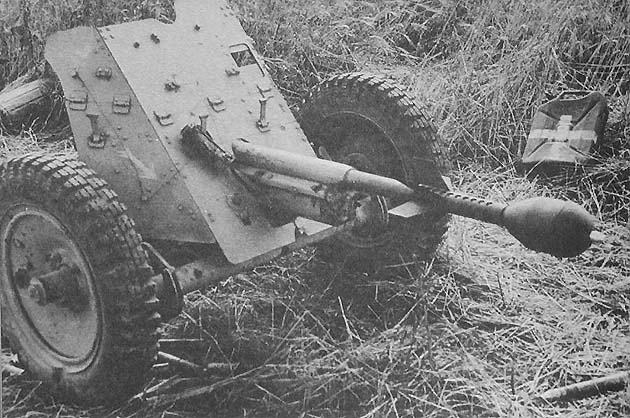
As the years of W.W.II progressed, the Germans were faced with an ever increasing armor threat, especially on the Russian Front against the T-34 tank. The German 3.7cm
PAK (Panzerabwehrkanone) 36 anti-tank gun was in wide spread use but became increasingly ineffectual against tanks by 1941.
While newer and more effective anti-tank guns were in production, distribution of those was another matter. Nor could they afford to just abandon the many PAK
36's in the field. Besides, it was still an effective light field gun.
It is far easier to upgrade ammunition than the field piece and so was born the 3.7cm Stielgranate 41 (a.k.a. 3.7cm Aufsteck Geschoss - "Attached Projectile").
This is a finned rodded-bomb with a massive hollow charge warhead. Muzzle-loaded onto the PAK 36 and propelled by a special cartridge.
It weighed almost 8.6kg(19lb) which resulted in a very slow muzzle velocity of
110mps (361fps). This limited it to an effective a range of 300m (328yd), due to diminished accuracy beyond that distance.
However, it could project out to about 800meters. Any hit regardless of distance would be just as deadly, as hollow charge weapons do not depend on velocity to do their work.
The 2.42kg (5.3lb) warhead could penetrate 180mm (7in) of armor plate at 60deg. at any distance. Compared to the 3.7cm PAK 36 performance of only 30mm (1.2in) at 500 meters at 90deg.
Quite formidable for its day and could defeat any tank of the time.
(Above - A 3.7cm AP/HE round for the Pak 36 is shown for comparison.)


